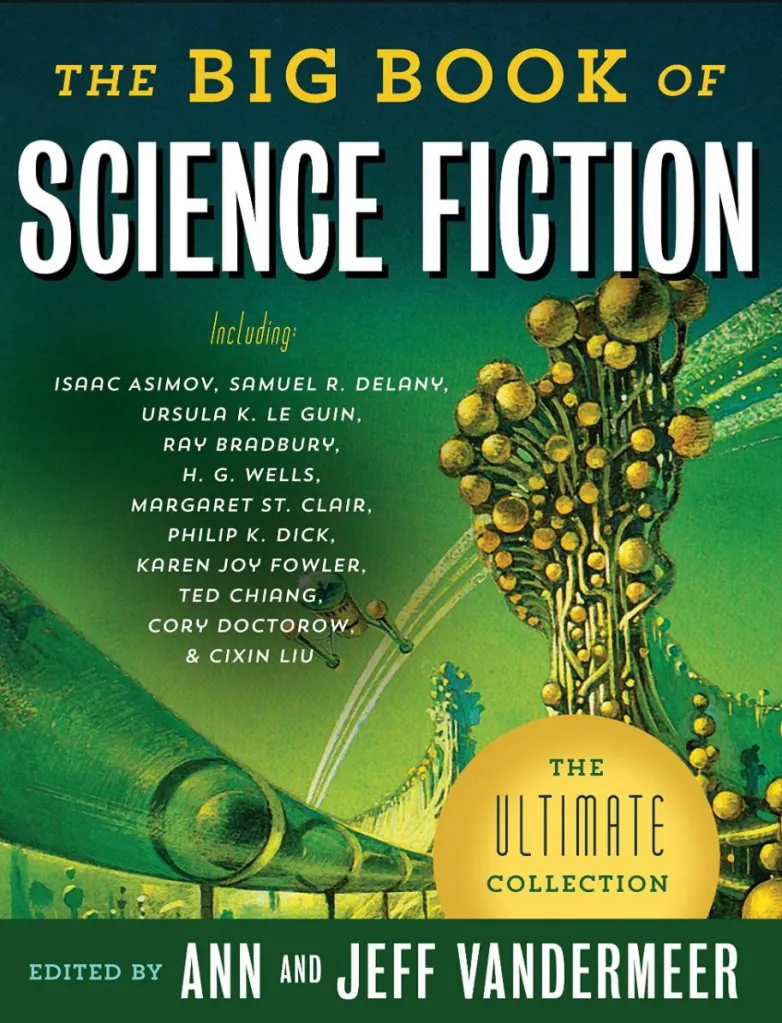
Group Read 27: The Big Book of Science Fiction
Story #81 of 107: “Readers of the Lost Art” by Élisabeth Vonarburg
On the surface, “Readers of the Lost Art” by Élisabeth Vonarburg feels like something written for the Marquis de Sade but he would have been bored by this pretty presentation of two people being flayed alive for art. Again, the VanderMeers have selected another science fiction horror tale. I have to assume there is more to the story than what we’re told in words.
The introduction claims it’s transgressive and transformative and about ritual and creativity. But I’m sure the Incas could have said the same thing about their human sacrifices. However, the story seemed straightforward to me, and I missed any symbolism or satire. I sensed each action in the story before it was revealed but evidently missed all the intended literary implications. My bad.
“Readers of the Lost Art” feels like the kind of story we read in Dangerous Visions so long ago. That anthology edited by Harlan Ellison from the 1960s was intended to shock. The trouble with stories written to shock is they often don’t. They just seem silly and absurd. They feel like kids playing a game of gross-out. I’m sure the VanderMeers and other readers do find intellectual insights in this story, but I didn’t.
Now, don’t get me wrong, I do enjoy a good story with shocking elements. The same night I read “Readers of the Lost Art” I also reread “Fondly Fahrenheit” by Alfred Bester. I’ve lost count of how many times I’ve read that story and it has grosser elements than the Élisabeth Vonarburg tale. And it’s even experimental fiction. The reason why “Fondly Fahrenheit” is a masterpiece is in its storytelling style. “Fondly Fahrenheit” sparkles, whereas “Readers of the Lost Art” was merely good writing. I wonder if it sparkled in the original French?
One major difference between the two stories is pacing. “Fondly Fahrenheit” relentlessly races, while “Readers of the Lost Art” trods at a casual nonchalant. That’s an arty way of being aristocratically indifferent, which I think the story intended, but I also think it hurt its presentation. The story is one long, evenly paced, description of a performance piece, with side glances to events in the audience. I was actually more intrigued by those glimpses at the watchers of the performance.
Notice the even paragraphs, the careful, but the plodding pace of the descriptions.

Now, look at a similar page from “Fondly Fahrenheit.” This is actually one of the slower sections of the story, yet murder and a change of planets happen on this Kindle page. But also, Bester tells more about the characters and moves the story along better with each sentence.

It’s not that “Readers of the Lost Art” is badly written, but it’s overly descriptive. It’s Henry James to Bester’s Ernest Hemingway. And that is an artistic choice. But was it the right choice for a story about humans being skinned alive? If you’re writing about shocking scenes, shouldn’t the sentence structure shock too?
James Wallace Harris, 1/29/22

Being more of a Jamesite than a Hemingwayvian, I’ll take this one!
LikeLike
Then, I look forward to your review.
LikeLiked by 1 person